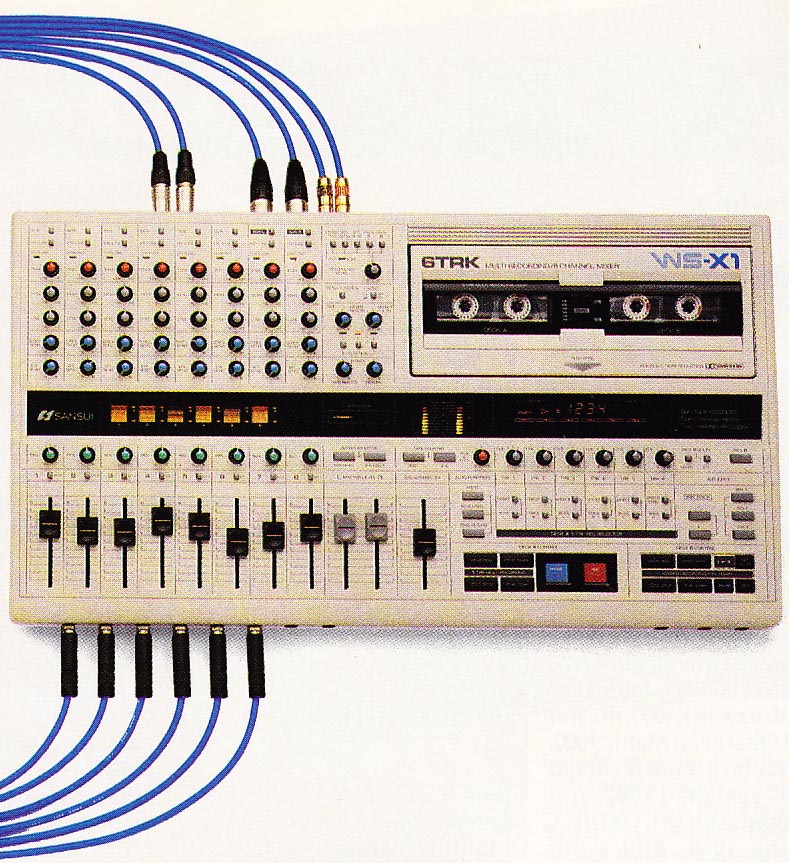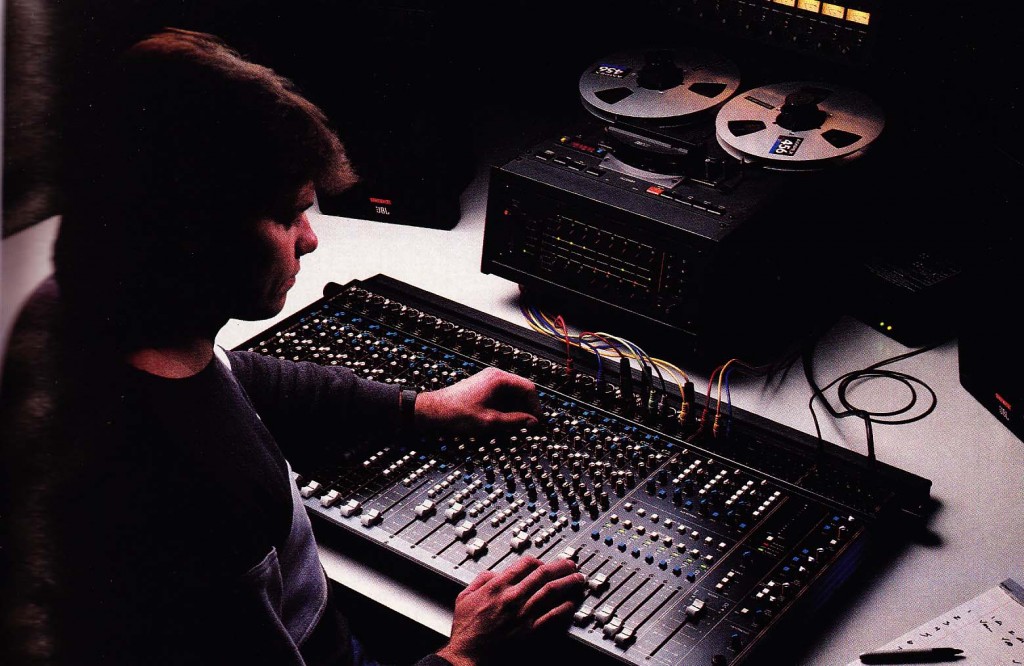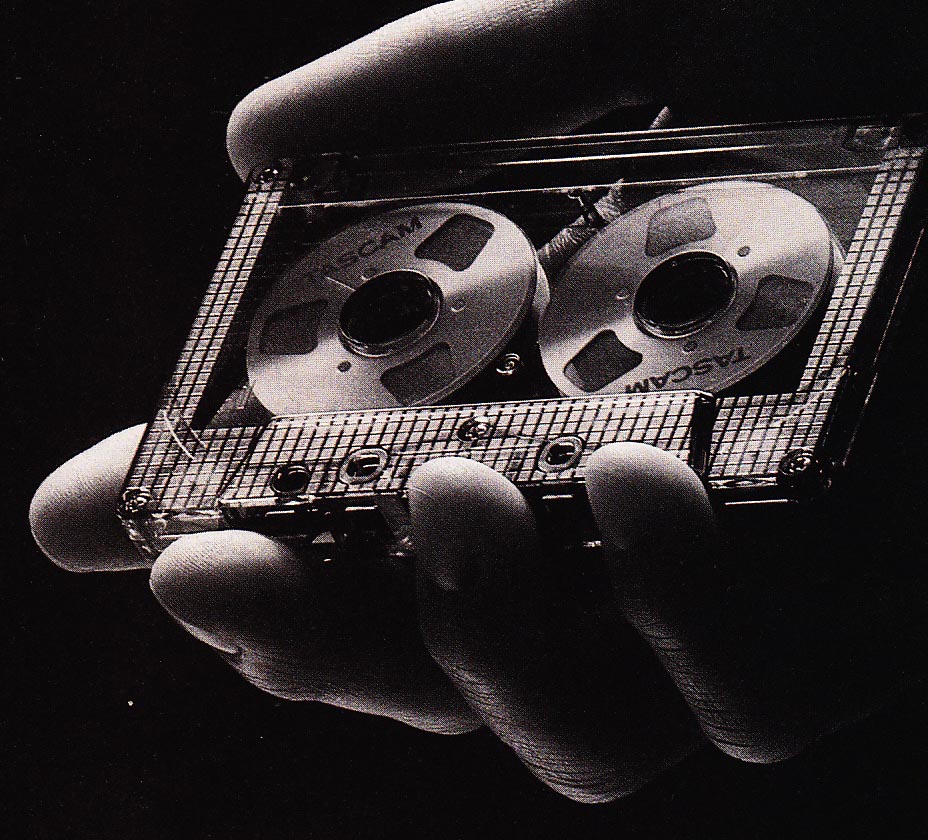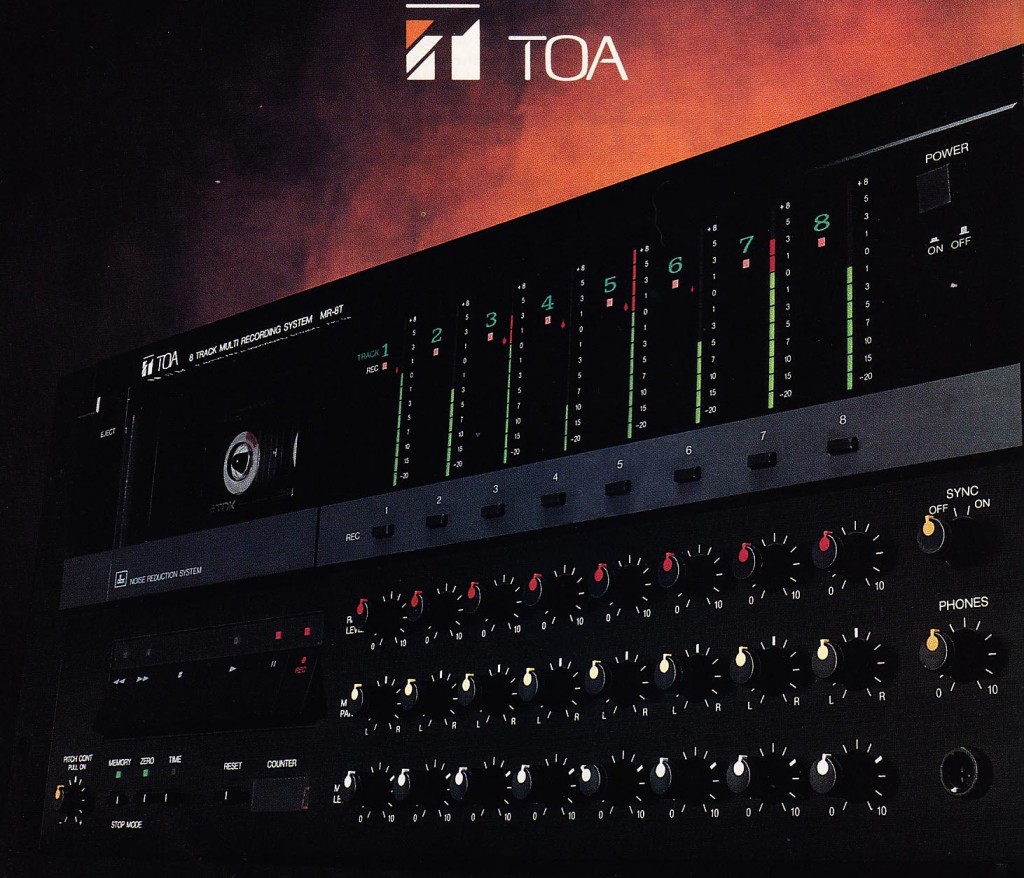 Sansui six-track cassette format c. 1989
Sansui six-track cassette format c. 1989
 Otari Compact 8-track 1/2″ format c. 1989. Also, SECK mixer.
Otari Compact 8-track 1/2″ format c. 1989. Also, SECK mixer.
 …and you better bet TASCAM made one too.
…and you better bet TASCAM made one too.
Above: some short-lived “more-than-four” home-recording formats that were available between the 4-track cassette and ADAT eras. It’s kind hard to imagine how significant an issue ‘track count’ (IE., the number of available tracks of a particular multi-track recording machine) was just a short while ago. It’s not unusual at all these days for me to make a production for an artist that has 80 or even 100 tracks. And I am not talking about some crazy orchestral or prog-rock epic; I am talking about just a well-produced indie pop song. Modern music means layering. Lots of it. When I, and many other folks started doing this, we dreamed of someday having more than 8 tracks to work with. Well, as it turns out, ‘more’ didn’t mean 16, 24, or even 48: it meant infinite. “Be careful what you wish for…”
What will be the next technological barrier to fall in the world of audio production?
I wouldn’t mind seeing all those goddamn wires go away, for one…
Any other ideas?

2 replies on “Beyond Four Tracks”
i still remember when daryl hall’s akai mg1214 was on consignment at eastcoast music mall in good ole’ danbury. 12 tracks (plus 1 track for TC and another for sync) on 1/2″ proprietary tape in a super classy-looking package. one of these days i will buckle and snatch one of these up, if only to rest my elbows on that naugahyde arm rest…
Man, anyone who is using 100 tracks for an indie pop song needs to have their head examined. But more importantly, that Sansui 6-track looks really cool.
The Portastudio